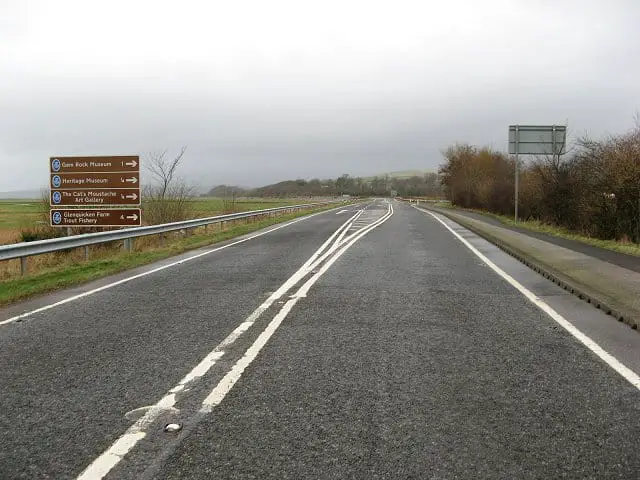At least once a week, I talk to a traveler who is nervous about driving around Ireland. But whenever I speak to someone at the end of their trip, they always tell me they were worried over nothing! Let’s make sure you hit the Irish roads confident in what you will find…
It is not difficult to drive in Ireland. Visitors can be intimidated by things like driving on the left or using small country lanes or roundabouts. These can be easily dealt with through practice, planning and research, both before and after arrival when appropriate.
Once you know what to look out for when driving in Ireland, you will be able to find many great hidden gems and local secrets that 90%+ of tourists will never get to see. First, you need to know what to expect…

How Difficult is it to Drive in Ireland?
There are millions of safe car journeys in Ireland every day, so driving in Ireland is far from impossible. However, many visitors to the country might get hung up on certain things when they arrive, so it’s always a good idea to make yourself as comfortable as possible when driving in a new country.
While manual cars are far more common among Irish people, automatic cars are becoming more popular, especially with the influx of electric vehicles. This means that there are plenty of automatic vehicles to chose from when renting a car in Ireland. Take this option if you don’t want to worry about shifting gear.
Upon receiving your new rental car, you should note that in Ireland you chose a category of car, not a specific vehicle. Once you have your assigned vehicle, take some time to drive around the airport carpark a little to get the hang of things. Once you’ve done this you should be ready to hit the main road!
While Ireland is a developed country with good quality main roads that are well signposted, it is always a good idea to assign someone to navigate when that’s an option. Have the navigator keep an eye on the route, while the driver keeps their eyes on the road itself.
Driving in Ireland for Americans

In Ireland, like the UK, we drive on the wrong side of the road. While this will make things easy if you are travelling around both islands, it can take some getting used to if you are coming from somewhere else. Make sure to take some time to get some practice in at the carpark when you arrive.
One thing to note about our road signs is the speed limit will change from kilometers to miles, depending on what part of the island you’re on. In Northern Ireland, they are part of the UK and use miles, in the rest of Ireland they use kilometers. Make sure to pay attention, especially when crossing the boarder!
One thing that I have often heard from US visitors to Ireland is that the speed limits are far higher than they would think. The maximum speed limit on the biggest Irish roads is 120km/h or 75mph. Smaller roads may have a higher limit than you’re used to, drive at a pace that is comfortable to you.
Roundabouts can be one of the most intimidating things about Irish roads, and European roads in general. While they can sometimes be a little stressful if you don’t know what you’re doing, they are there to help the overall flow of traffic. Please see the Irish Road Safety video about them below:
What to Know About Roads in Ireland
Ireland is famous for its small country roads or “Boreens”, these are usually only fit for one vehicle to drive on at a time and can often be overgrown with vegetation. When on these roads, make sure to drive carefully and know that you may have to reverse back to let another vehicle pass.
While the smaller Irish roads may be the more intimidating to drive on for people who have yet to visit Ireland, the cities have by far the worst traffic. If you are planning a road trip through Ireland, make sure to avoid major cities, especially Dublin and Galway, during rush hour.
Something else that you will find as you travel through rural Ireland in particular, is the “country wave”. This is the practice of waving to people as you drive past on smaller Irish roads. Make sure to do this when someone does it to you, as its rude to ignore!
How to Plan a Journey in Ireland by Car
Navigating your way around Ireland should not prove to be an issue. Most of the major towns and cities are connected by main roads and will be well signposted. For more information on Irish road signs, please check out the video below:
As Ireland is well connected by roads, there are many refueling stations around the country, you should not have any difficulty finding a place to full up your car. However, you should always make sure to double check if your car uses diesel and compare prices in different stations when possible.
Ireland is not a big country and for many visitors, the driving times between places can seem quite short. It will be easy to plan a journey with regular stops every 2 hours. However, as you spend time travelling through Ireland, you will realize just how much there is to see and do, you will not get to see it all!
Most of the major roads in Ireland are toll roads. The average price for most cars and campervans is around €2, though this may vary. If you are travelling in a campervan, make sure to inform the attendant at the booth, or over an intercom, if the price is too high.


